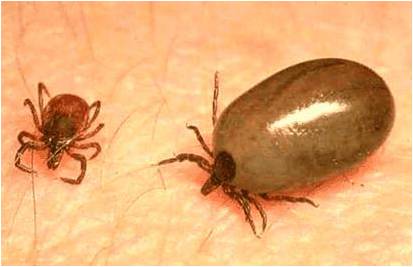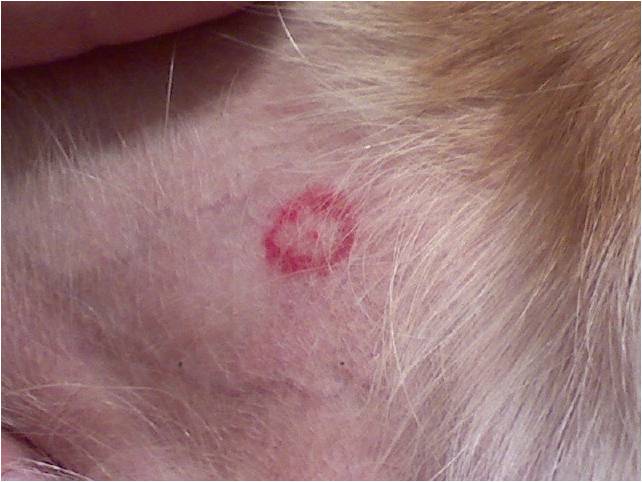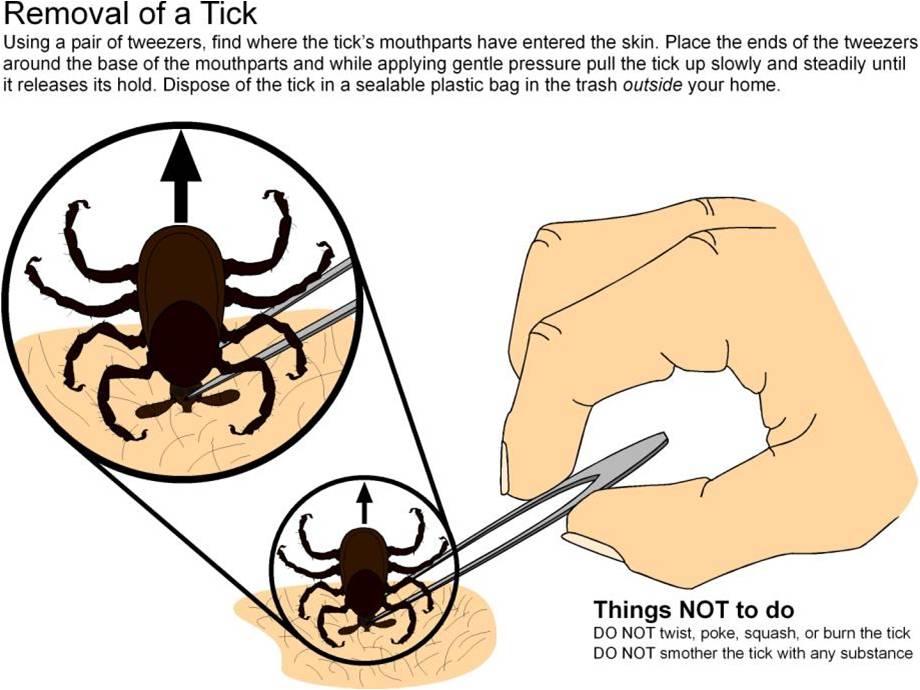Conventional wisdom is that the warmer winters recently have led to an increase in the number of ticks (and fleas) present in the state of Minnesota as well as an increase in the incidence of Lyme (and other tick-borne) disease. Unfortunately, the statistics for dogs lag by several years, but the incidence of human lyme disease cases has been on a steady increase for the past 10-15 years nationally. (See chart at CDC web site) Number of cases in Minnesota also has risen over the past 10 years. (Minnesota chart)
As recently as 2010, the EPA began an investigation concerning the recall of various brands of tick medications because of the relatively high number of reports of skin reactions in pets. The offenders included over-the-counter brands such as Spot-On, Bio-Spot, Sergeant Gold – which typically are not sold at veterinary clinics, but rather at retail stores. Those that are sold at clinics or by licensed veterinarians only (Frontline Plus, Advantage, etc.) are typically guaranteed by the manufacturer and were not included in the recall. This is primarily because the patient can be tracked back to the specific batch number that was dispensed, and the pet’s reactions are documented in the medical record, which is a legal document.
With early-onset warm weather, it is increasingly important that your pets are protected. Talk to your veterinarian about how to protect your pet from ticks and fleas. Here are a number of articles and links to information regarding Lyme Disease and other Tick-Borne Diseases.
Preventing Lyme Disease: A Broad-Spectrum Approach
Source: AAHA’s PetsMatter Volume 3 Issue 2 Spring has arrived in North America, bringing with it the promise of budding flowers, warmer weather, longer days — and ticks!
Spring has arrived in North America, bringing with it the promise of budding flowers, warmer weather, longer days — and ticks!
These tiny disease carriers are most active during the spring and summer and can transmit Lyme disease to both you and your pets. The Lyme Disease Foundation, along with the Merial pharmaceutical company, recognizes April as Prevent Lyme in Dogs Month to increase awareness of the risks and encourage pet owners to take precautions.
Read the rest of this article here:
Tick-Transmitted Diseases
(Source: AAHA’s www.healthypet.com) Ticks are such small insects, but they can pose a very great danger to us and our companion animals. They prey on the blood of dogs, horses, deer, birds, rodents, and people. There are hundreds of kinds of ticks, including the dog tick and the deer tick. Diseases that ticks can transmit to companion animals include Lyme disease, Rocky Mountain spotted fever, ehrlichiosis (a bacterial infection), and babesiosis (a blood disorder).
Ticks are such small insects, but they can pose a very great danger to us and our companion animals. They prey on the blood of dogs, horses, deer, birds, rodents, and people. There are hundreds of kinds of ticks, including the dog tick and the deer tick. Diseases that ticks can transmit to companion animals include Lyme disease, Rocky Mountain spotted fever, ehrlichiosis (a bacterial infection), and babesiosis (a blood disorder).
Ticks live in cracks and crevices in the home or outside in vegetation, such as grassy meadows, woods, brush, and weeds. They cannot fly or jump, but they have a way of finding a host. Oftentimes, they will wait in wooded or grassed areas and attach themselves to any living creature that brushes them. Ticks can also detect the carbon dioxide given off by warm-blooded animals. They can crawl several feet to the carbon dioxide source.
Click here to read more about specific tick-borne diseases - Lyme disease, Rocky Mountain Spotted Fever and Tick Paralysis.
Tick Removal
Need to know how to remove a tick? Here is a link.

Fast Facts & Links to Information About Lyme Disease
We provide lots more information HERE.

